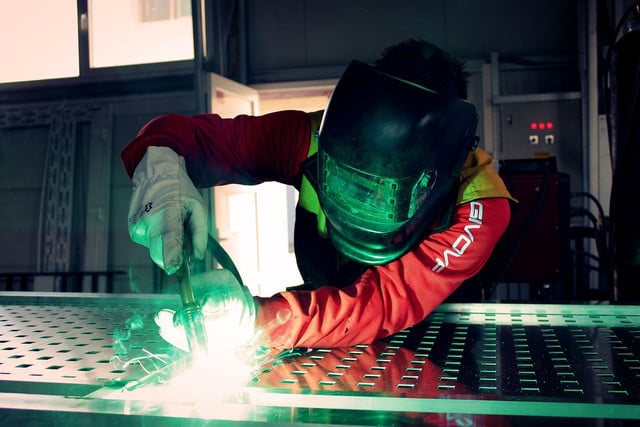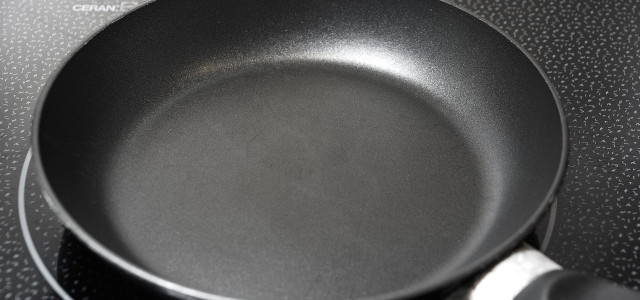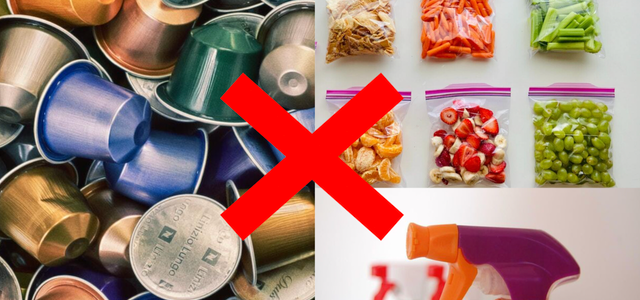In short, PTFE is a chemical compound commonly used in cookware. We look into what PTFE is, why it’s used for cookware and whether it is safe
Many people wonder what PTFE is doing to the environment. But is PTFE a bad thing? With all of the different types of plastics we use in our everyday lives, it’s hard to know if something is safe to use or not. In this article, we will look at what PTFE is and what it does in our day-to-day lives.
What Is PTFE?

PTFE, or Polytetrafluoroethylene, is a chemical compound that is a type of fluoropolymer. Fluoropolymers are a class of plastics that contain fluorine. Fluoropolymers are made from polymers mixed with fluorine and other materials like hydrogen and chlorine. Fluoropolymers are useful because they do not corrode or stain, and they are very resistant to heat and chemicals.
PTFE is a man-made, non-toxic, and non-reactive material commonly used in cookware and medical equipment. It is also used in other industries, such as aerospace and mass food production.
It is soft, white, tasteless, odorless and heat-resistant, which makes it perfect for cooking products. It is also very durable, so PTFE can be used in products that require a lot of use. As such, it’s often used for pans and non-stick cookware, such as Teflon.
Is PTFE Different From Teflon?



PTFE is sometimes called Teflon, which is the brand name for the non-stick coating that is used on cooking pots and frying pans.
In terms of composition, there is no difference between Teflon and PTFE. They are virtually the same product. Teflon cookware is made by applying a coat of PTFE resin to aluminum, stainless steel or cast iron. While PTFE is generally heat-resistant, high temperatures can have a damaging effect. According to research:
- Above 500°F, PTFE resin begins to release polymer fumes.
- At temperatures of 572°F, PTFE can cause an illness known as Teflon fever. This is where polymer fumes cause fever-like symptoms, shivering, sore throat and weakness.
- By 752°F, PTFE degrades completely, releasing several secondary gasses that cause respiratory problems such as shortness of breath, chest pain and cough.
While these issues are more likely to affect those working with PTFE at an industrial level, there are some reports that they can affect those who consume food cooked using Teflon. We’ll examine these claims below.
Is PTFE Safe for You?



Some research has speculated that even at low heat, Teflon particles are capable of causing death in animals. Earlier versions of Teflon used a chemical acid called PFOA to manufacture PTFE. This chemical was likely one of the main reasons for this toxicity. However, in 2002, after toxic effects were noted, it was phased out from the Teflon manufacturing process.
Regarding the toxicity of PTFE in recent years, the American Cancer Society believes humans are unlikely to be affected by using modern Teflon in normal cooking circumstances. Although not a natural compound, PTFE is not toxic to the human body when used at temperatures below those specified above.
PTFE and the Environment



Although PTFE may be safe for humans, one should also consider environmental problems. In 2019, a paper published on fluoropolymers such as PTFE suggested that they may cause the harmful substance TFA (Trifluoroacetic acid) to be released into the water and air.
Researchers found that derivatives of TFA are highly water soluble. This means they can easily dissolve in water and be carried significant distances through rain and other water sources. At high concentrations, it is corrosive, does not degrade, and can harm aquatic life. Researchers have even found traces of TFA in beer and tea, where it had been absorbed into barley plants as they take in water.
In low concentrations, TFA is relatively harmless to humans. However, if it goes undetected, researchers worry that people or wildlife may consume it in larger quantities without knowing. More information is needed before we can say whether this is a risk factor we should be concerned about regarding PTFE.
Conclusion
PTFE is a product with a controversial scientific background. At present, there have been no formal indications that it is environmentally damaging or can cause bodily harm. But as research develops, this may change. It is worth keeping an eye on the research when using Teflon products and questioning what PTFE is doing to our ecosystem in the future.
Read on:
- Is Stainless Steel Cookware Safe? What You Should Know
- 8 Benefits of a Cast Iron Skillet and 5 Downsides
- Why Scratched Non-Stick Pans Could Harm You
Important Information regarding Health-related Topics.
** Links to retailers marked with ** or underlined orange are partially partner links: If you buy here, you actively support Utopia.org, because we will receive a small part of the sales proceeds. More info.Do you like this post?







